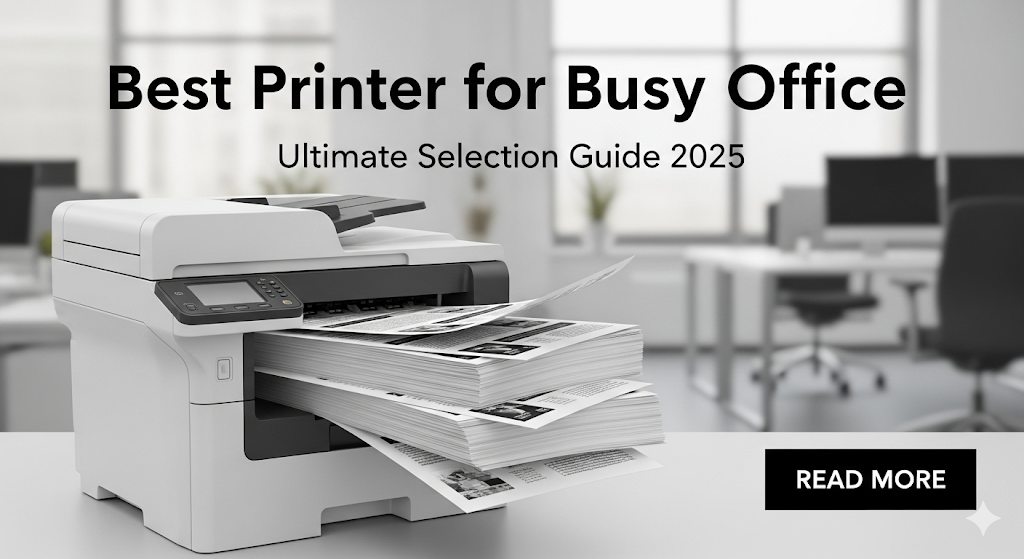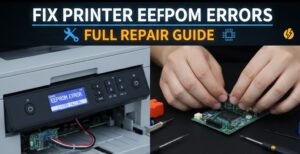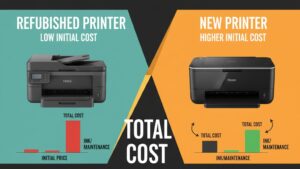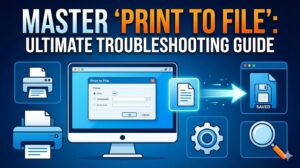Introduction
Finding the best printer for busy office environments can make or break your workplace productivity. High-volume printing demands create unique challenges that standard home printers simply cannot handle.
Busy offices need printers that deliver consistent performance under pressure. Your team relies on quick document turnaround, reliable operation, and cost-effective printing solutions that won’t slow down critical business operations.
The wrong printer choice leads to frustrating delays, frequent breakdowns, and skyrocketing operational costs. However, selecting the right model transforms printing from a bottleneck into a smooth, efficient process that supports your team’s success.
This guide provides proven strategies to identify and choose the perfect printer for your demanding office environment.
What Is High-Volume Office Printing?
High-volume office printing refers to environments that regularly produce large quantities of documents daily. These settings typically print 1,000 to 10,000+ pages monthly across various document types.
Busy offices handle diverse printing needs including reports, presentations, marketing materials, and client documents. This variety requires printers capable of handling different paper sizes, weights, and finishing options without performance degradation.
The best printer for busy office settings must maintain consistent quality and speed even during peak usage periods. These environments cannot afford extended downtime or slow processing that disrupts workflow.
Modern high-volume printing also encompasses digital integration requirements. Offices need printers that seamlessly connect with cloud services, mobile devices, and existing IT infrastructure while maintaining security protocols.
Understanding your specific volume requirements and usage patterns forms the foundation for making informed printer selection decisions that support long-term business growth.
5 Essential Steps to Choose Your Perfect Office Printer

Step 1: Calculate Your Monthly Print Volume
Start by tracking your actual printing needs over several months. Count both color and black-and-white pages separately to understand usage patterns.
Most busy offices underestimate their true printing volume. Include scanning, copying, and faxing in your calculations if you need multifunction capabilities.
Consider seasonal variations and business growth projections. The best printer for busy office environments should handle 20-30% above your current peak volume to avoid performance issues.
Step 2: Determine Speed Requirements
Evaluate how quickly you need documents printed during busy periods. Fast printers typically produce 40+ pages per minute for monochrome and 25+ pages per minute for color.
Consider first-page-out times, which measure how quickly printing begins after sending a job. Busy offices benefit from printers with sub-10-second first-page times.
Factor in warm-up times from sleep mode. Energy-efficient printers may have longer wake times that could impact urgent printing needs.

Step 3: Assess Paper Handling Needs
Analyze the paper sizes, weights, and types your office regularly uses. Standard letter and legal sizes cover most needs, but some offices require larger formats.
Calculate required paper capacity based on daily usage. High-capacity input trays (1,000+ sheets) reduce refill frequency and maintenance interruptions.
Consider automatic duplex printing for cost savings and environmental benefits. This feature significantly reduces paper consumption for double-sided documents.
Step 4: Evaluate Total Cost of Ownership
Look beyond the initial purchase price to understand true operational costs. Include toner or ink expenses, maintenance contracts, and energy consumption in your calculations.
The best printer for busy office environments often have higher upfront costs but lower per-page expenses over time. Calculate costs over a 3-5 year period for accurate comparisons.
Factor in potential downtime costs. Reliable printers with strong service support prevent costly business disruptions that affect productivity and client satisfaction.
Step 5: Consider Connectivity and Security Features
Modern offices need printers with robust network connectivity including Ethernet, Wi-Fi, and mobile printing capabilities.
Security features become critical in busy environments handling sensitive information. Look for user authentication, encrypted data transmission, and secure print release functions.
Cloud integration capabilities enable seamless workflow with popular business applications. This connectivity supports remote work arrangements and digital document management systems.
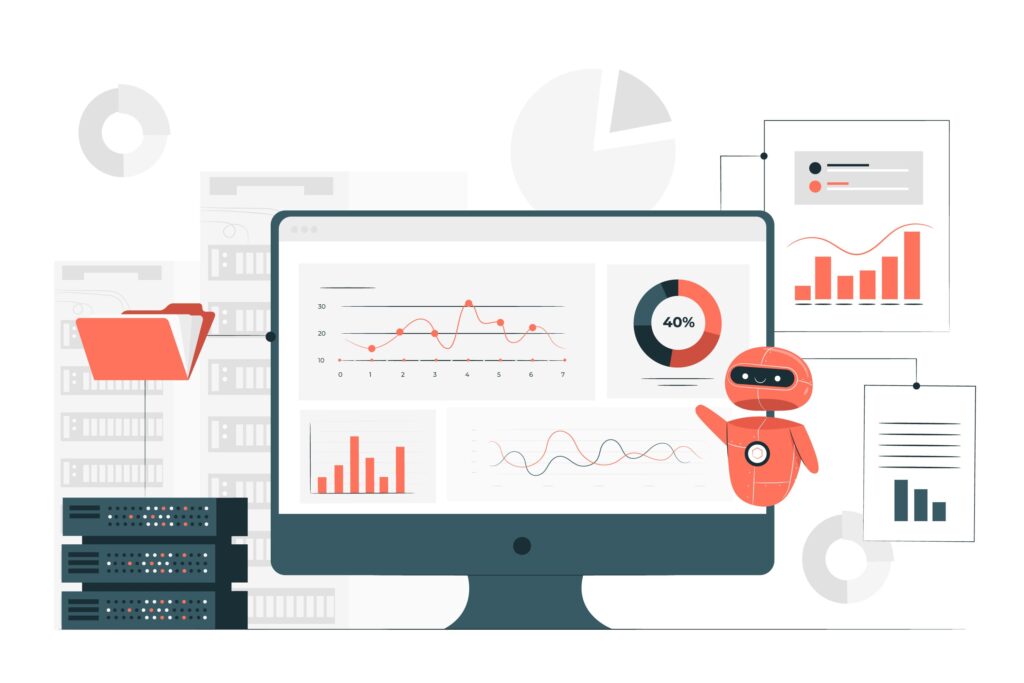
Additional Insights and Professional Tools
Professional printer management software helps optimize performance and reduce costs in busy environments. These tools monitor usage patterns, predict maintenance needs, and automatically order supplies.
Consider managed print services for comprehensive support. These programs provide regular maintenance, supply management, and performance optimization tailored to your specific usage patterns.
Fleet management becomes important for offices with multiple printers. Centralized monitoring and control systems ensure consistent performance across all devices while simplifying administration.
Leasing options often make sense for busy offices requiring high-end equipment. Leases include maintenance, upgrades, and support while preserving capital for core business investments.
Environmental considerations matter for corporate responsibility goals. Energy-efficient models and sustainable printing practices reduce operational costs while supporting green initiatives.
Common Mistakes and Troubleshooting Tips
The biggest mistake offices make is choosing printers based solely on purchase price. The best printer for busy office settings requires evaluating total ownership costs including supplies, maintenance, and reliability factors.
Underestimating print volume leads to premature equipment failure and excessive maintenance costs. Always plan for growth and peak usage scenarios when sizing printer capabilities.
Ignoring network infrastructure requirements causes connectivity problems. Ensure your network can handle additional devices and traffic without performance degradation.
Poor placement decisions impact both performance and user satisfaction. Position printers in accessible locations with adequate ventilation and space for maintenance access.
Inadequate supply management creates workflow disruptions. Establish automatic reorder systems and maintain backup supplies to prevent unexpected shortages during critical periods.
Skipping regular maintenance schedules reduces reliability and print quality. Follow manufacturer recommendations for cleaning cycles and component replacements to ensure consistent performance.
Training gaps lead to user frustration and reduced productivity. Provide comprehensive training on advanced features and troubleshooting procedures to maximize equipment utilization.
Frequently Asked Questions
Q: What print speed do I need for a busy office? A: Busy offices typically need 30+ pages per minute for monochrome and 20+ pages per minute for color printing to avoid workflow bottlenecks during peak periods.
Q: Should I choose laser or inkjet for high-volume printing? A: Laser printers generally work better for busy offices due to faster speeds, lower per-page costs, and better reliability under heavy usage conditions.
Q: How important are multifunction capabilities? A: Very important for busy offices. Combining printing, scanning, copying, and faxing saves space, reduces costs, and simplifies equipment management.
Q: What security features should office printers have? A: Essential features include user authentication, encrypted data transmission, secure print release, and regular firmware updates to protect sensitive business information.
Q: How do I calculate total cost of ownership? A: Include purchase price, consumables (toner/ink), maintenance contracts, energy costs, and potential downtime expenses over the printer’s expected 3-5 year lifespan.
Conclusion
Selecting the best printer for busy office environments requires careful analysis of your specific needs and future growth plans. Speed, reliability, and cost-effectiveness must balance with security and connectivity requirements.
The five-step selection process ensures you evaluate all critical factors before making this important investment. Remember that the cheapest option rarely provides the best long-term value in demanding environments.
Professional support and maintenance programs become essential for busy offices that cannot afford extended downtime. Factor these services into your decision-making process for optimal results.
Take time to thoroughly assess your current and projected needs. The right printer choice will support your team’s productivity and contribute to business success for years to come.
Best Office Printers 2025: Top 7 Fast, Reliable & Cost-Efficient Models Read More

